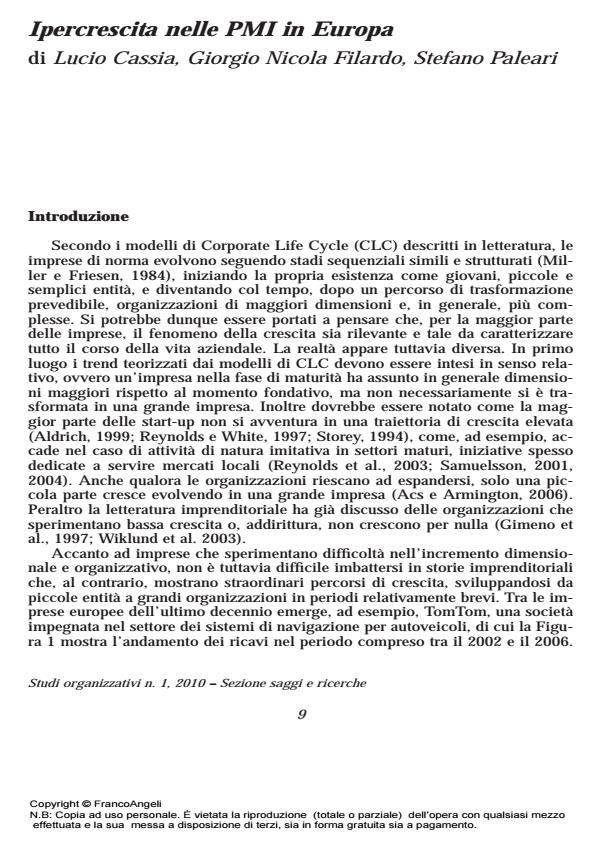Ipercrescita nelle PMI in Europa
Titolo Rivista STUDI ORGANIZZATIVI
Autori/Curatori Lucio Cassia, Giorgio Nicola Filardo, Stefano Paleari
Anno di pubblicazione 2010 Fascicolo 2010/1
Lingua Italiano Numero pagine 26 P. 9-34 Dimensione file 496 KB
DOI 10.3280/SO2010-001001
Il DOI è il codice a barre della proprietà intellettuale: per saperne di più
clicca qui

FrancoAngeli è membro della Publishers International Linking Association, Inc (PILA)associazione indipendente e non profit per facilitare (attraverso i servizi tecnologici implementati da CrossRef.org) l’accesso degli studiosi ai contenuti digitali nelle pubblicazioni professionali e scientifiche
Economic literature have clearly shown that the growth, wealth and economic develpment of a country are closely related to firm growth. In particular, it is possible to identify in each country a limited number of firms exhibiting a growth which seems significantly faster than the others; the term used to refer to this phenomenon is hypergrowth. Despite its high economic potential, research on entrepreneurship and on the organizational structures did not previously investigate hypergrowth in a systematical fashion, particularly with regard to what determine it; the few existing studies have mainly focused on American companies. Moreover the phenomena of hypergrowth underlie recognized criticality of organizational nature, resources’ motivation and financial management. This work, based on a sample of 307 companies selected from over 200.000 European companies between 1998 and 2006, intends to draw the attention of organization scholars to the phenomenon of hypergrowth by identifying the characteristics of the firms having shown an extraordinary development in the European area. In particular, following their recognized importance in many European countries, this research focuses on small-medium-sized enterprises (SMEs), clarifying the differences between the hypergrowth firms and the firms exhibiting a different path of growth (control sample). The hypergrowth firms are younger, use external growth, have access to financial markets, are more in debt and invest more heavily. The identification of these firms’ features can provide a useful guidance to address policies aiming at fostering entrepreneurship, as well as to understand hypergrowth consequences on the organization and management. Thus this work aims at opening a line of research for scholars of organization and of entrepreneurial phenomena.
Parole chiave:Hypergrowth, European area, entrepreneurship, organizational systems
Lucio Cassia, Giorgio Nicola Filardo, Stefano Paleari, Ipercrescita nelle PMI in Europa in "STUDI ORGANIZZATIVI " 1/2010, pp 9-34, DOI: 10.3280/SO2010-001001